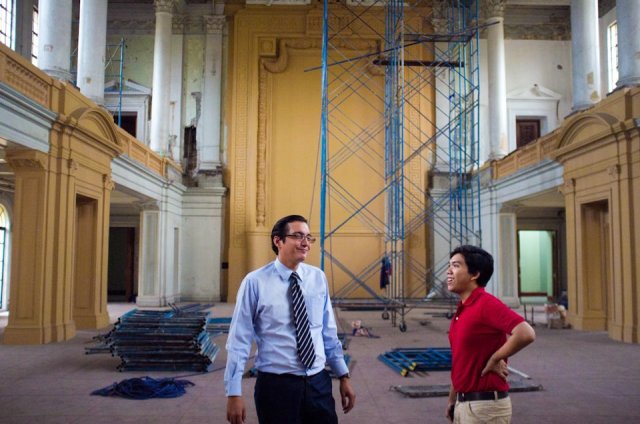
With Mr. Jeremy Barns, the Director of the National Museum, as I interviewed him inside the old Session Hall being restored. Mr. Barns’ leadership has been instrumental in the many positive developments in the National Museum. We owe him much for his vision and leadership (Photo taken by Joseph Angan.
These past few weeks, I’ve been seeing wonderful photos of people visiting the National Museum. Posting their shots of precious Lunas, Hidalgos, Amorsolos and whatnots, these people took advantage of the free entrance to the National Museum’s galleries and exhibits because the fee was waived in celebration of the Museums and Galleries Month of the Philippines.
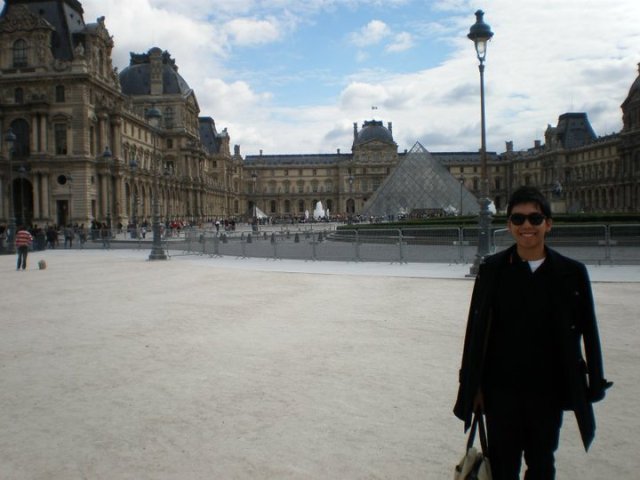
Outside the iconic Musée du Louvre, a magnet for international tourists and scholars. It is a place where people of almost every race converge to learn about not only the history of France but also of other civilizations.
Signed into law by the late former President Corazon Cojuangco Aquino as Proclamation No. 798 s. 1991, I presume it was meant to bolster awareness, appreciation and support for our country’s museums and galleries. But since 1991, I think it was only fairly recent when going to museums and art galleries became in vogue especially among the country’s middleclass.
With more and more people being able to travel abroad, where they are exposed to a barrage of museums and galleries, they come back to the country with some hunger for reconnecting with their own history and culture. I can be wrong but I think foreign travel has indeed shaped today’s generation of Filipinos into individuals in search for their own identity amidst a highly-globalized world.

Posing in front of the imposing “Spoliarium” of Juan Luna, perhaps the most iconic piece in the National Art Gallery. It won the first gold medal at the Exposición Nacional de Bellas Artes in 1884 in Madrid.

“La Bulaqueña”, painted by Juan Luna y Novicio in 1895, is one of the most beautiful gems of the National Museum. I call it the “Mona Lisa” of the National Art Gallery. Viewers are drawn to the innocent sensuality of the lady dressed in a Maria Clara, her face exuding a sombering, mysterious depth that pulls one into her soul and mind.
On the flip side, I’ve developed some melancholy with the impression that despite the affordability of these museums, the influx of visitors only occurs when the modest entrance fee is waived. At 150 Pesos, one can already access the Natural Sciences and Fine Arts museums of the National Museum, both housed in two period neo-classical buildings.
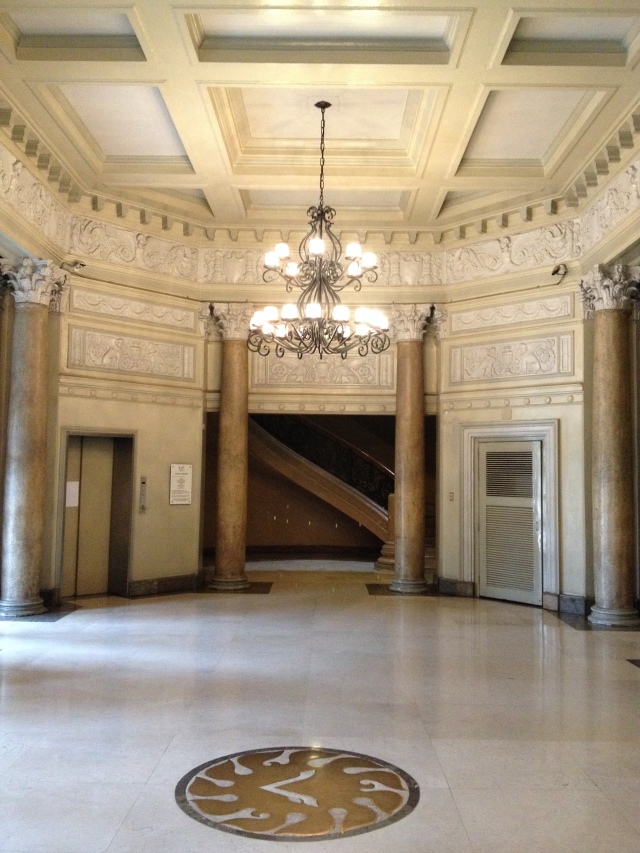
Guests to the National Art Gallery of the National Museum buy their tickets at the restored foyer of what was once an elegant Legislative House. It was designed by American Ralph Harrington Doane and his Filipino assistant, Antonio Toledo.
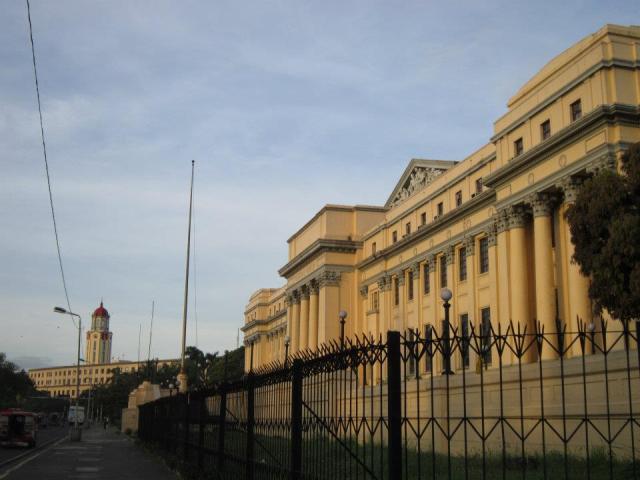
The National Art Gallery is housed in the former Legislative House, which is a neo-classical building that’s part of Manila’s Neo-classical Corridor.

The entrance to the National Museum was the historic sight of the inauguration of the Philippine Commonwealth in 1935.
Why visit a museum when it’s free when the entrance fee is your means of helping in the upkeep of our National Museum? We shouldn’t go cheap on government agencies like the National Museum precisely because of the intrinsically important assets they preserve and showcase: our national identity and local history. I know this is a good means to bring in people to be at least acquainted with our National Museum, and there is nothing wrong with that. But I just hope people go beyond this “free trip”, and truly make trips to our museums and galleries a normal part of their lives.
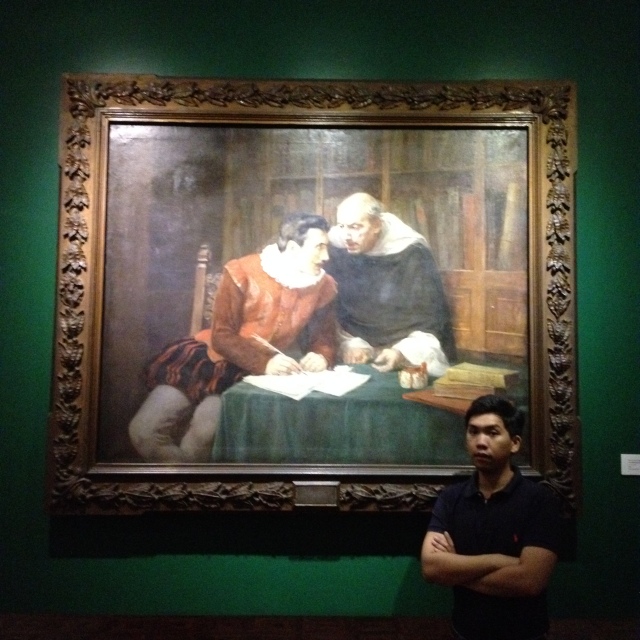
One of personal favorites at the National Museum: Félix Resurrección Hidalgo’s Don Perez de Dasmariñas (1896)
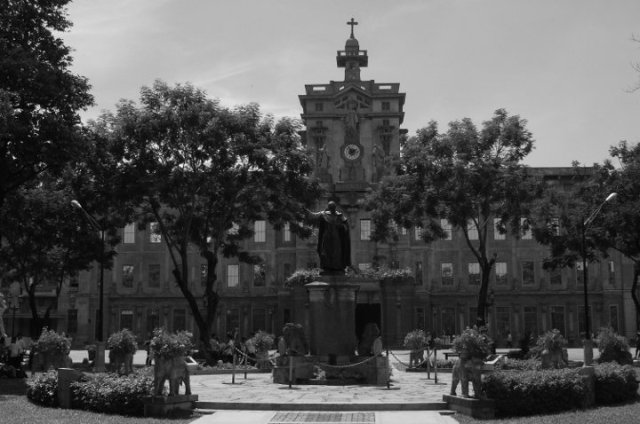
The University of Santo Tomas Museum is the oldest museum in the country. It is housed in the Main Building, a noteworthy architectural spectacle found amidst the hustle and bustle of downtown Manila.
A museum is not only a building. An art gallery is not only a room. Museums, in this case, the National Museum, is a repository of things that have witnessed important chapters of our story as a people. The things you see hung on the walls or kept in shelves are not just “old” things; they are tangible bearers of our country’s soul. They communicate our past, and what is the past but the wisdom of time? The past is like a cave that conceals stories, problems, scandals, triumphs, embarrassments and other human follies, which current and future generations should discover in order for them to live more meaningful lives and plan for a better, informed future.
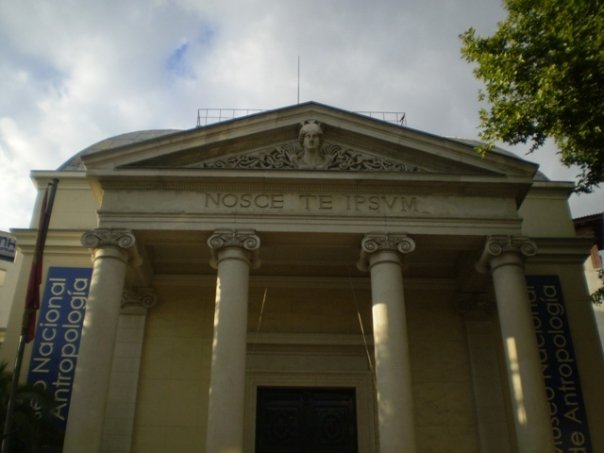
The entrance of the Museo Nacional de Antropología where a special hall is dedicated to Spain’s only outpost in the Far East, the Philippines. My visit here was very memorable as I was able to see how our local history is displayed in the land of our colonizer. It helped that I could read Spanish.

The Asian Civilisations Museum is a must-visit in Singapore for anyone visiting the tiny city-state. It showcases a finely curated set of exhibits that display our region’s heritage and history.
The museum is the torch you use to enter that cave, which is the past. Holding high the light of museum commentaries, research, exhibits and even events such as talks, symposia and launches, the flame which emanates from a museum – typically perceived as a temple for the archaic – is the beacon that will help us navigate through our current problems and future endeavors. The dynamics of museum operations such as research, conservation, audience engagement and marketing all add to that flame. They need to continue feeding the flame or else your museum ends up but nothing more than a stockroom or warehouse of dusty items.

Posing with French friends Marie Laure and Alexis with Paolo after a talk on Urban Planning at the National Museum.
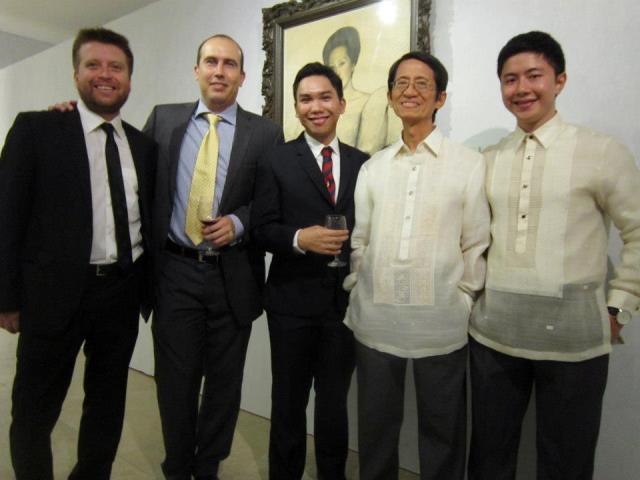
With Chilean friends and my mentor Dr. Fernando Nakpil Zialcita with his son during the “Claudio Bravo: Sojourn in Manila” event organized by the Lopez Foundation and the Chilean Embassy at the Met Museum.
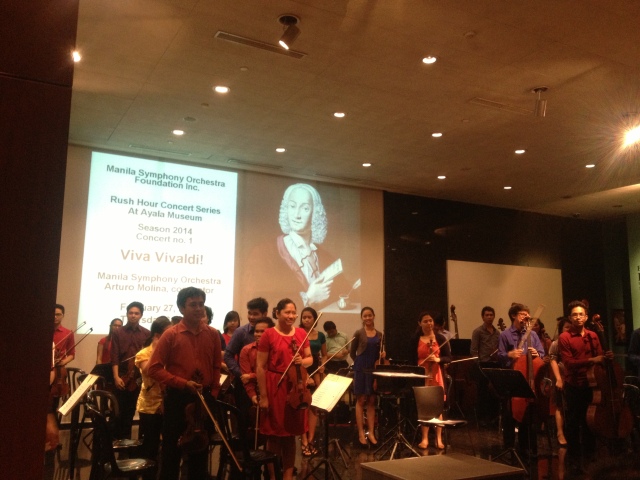
The Manila Symphony Orchestra posing for their last bow during the Viva Vivaldi concert at the Ayala Museum.
The reason why I feel uneasy with this periodic descent of people to the National Museum is precisely because they are motivated by the most shallow of things: it’s a free trip. Because they won’t spend a single centavo, people go to the museum. My hastiest and perhaps most flawed impression is that the free entrance motivates them to have a “selfie” at a beautiful place. Instead of going there because they’ve had a fatigue with horrendous malls and mall parking complexes, they go there with the same consumerist mindset, seeing the “free entrance” as if it’s a store sale. I hope I am completely mistaken.
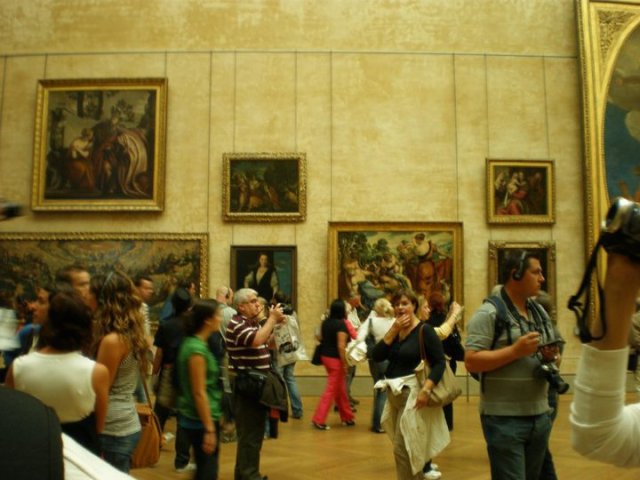
Throngs of tourists at the Hall of Italian Masters at the Louvre. The same hall houses the Louvre’s most popular resident, the Mona Lisa.
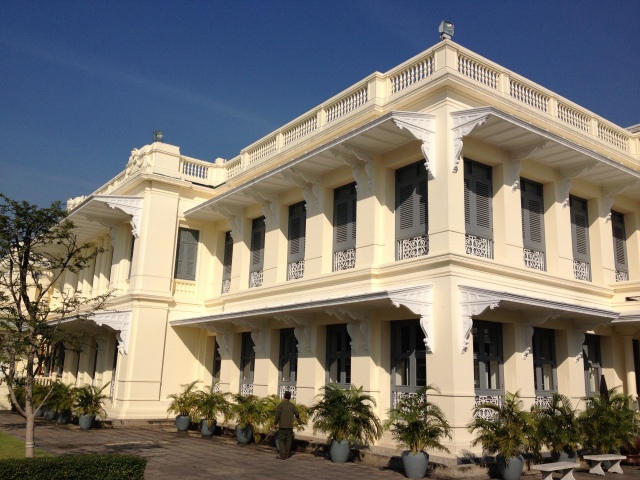
The Queen Sirikit Museum of Textiles sits inside the Grand Palace compound in Bangkok where Thai fabrics and textiles are tastefully exhibited for visitors to learn more about the Thais’ rich weaving heritage.
Museums matter even if the entrance is not free because it is home to a people’s soul. Its halls are hallowed not because of visitors but because they are filled with items which reflect the struggle of humanity to settle some of the most basic questions it has always tried to resolve. An appreciation for museums, for art pieces, for relics, for artifacts is a sign of deep love for human life! If one finds himself thirsty to touch base with these beautiful things, it means one is searching for proof of what is true, good and beautiful.
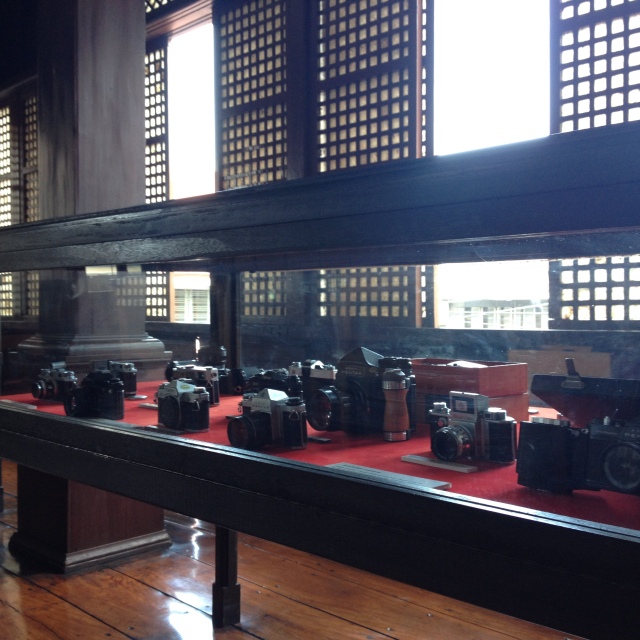
In Taal, a camera museum lures in photography buffs to look and be amazed by a wide array of vintage cameras that have shot countless memories of people through the decades. The entrance fee is just 100 Pesos.

The Casa de Regalo de Boda de Villavicencio is an experiential heritage museum which gives visitors a feel and glimpse to colonial living. It is located in Taal. Call first to book a visit. They do not charge a fee.
By gazing at a painting or by reading through the descriptions on a particular artifact, you are connecting with the story of the past, and by doing so, you are uniting yourself – mind and heart – to the story of our race.
The beauty of museums is that so many emotional and intellectual stirrings happen within it. Curiosity is piqued, interest is generated and a hunger for knowledge is sparked just by strategically displaying pieces and curating a menu of relics for people to view.
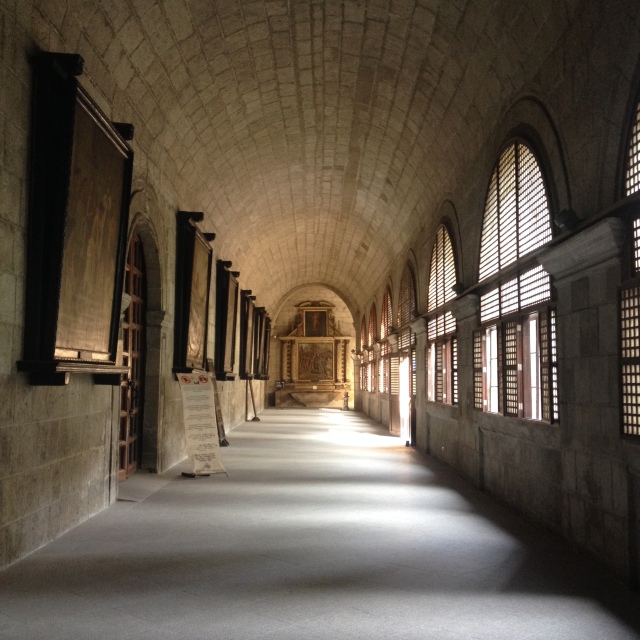
The San Agustin Ecclesiastical Museum is housed in the reconstucted monastery of the San Agustin, the oldest stone church in the country. It is a must-visit museum when going to Manila. It exhibits the depth and breadth of influence of the Catholic Church in this part of the region.
Museum management is hard-work and is an enterprise both of artistic vision and tactical planning. Kaya, please, huwag mo ng ipagdamot ‘yang 150 mo na pinang fafafastfood mo naman araw araw. Spend your money where it matters and help our museums and galleries continue enflaming our hearts to love our people, our story and our identities.
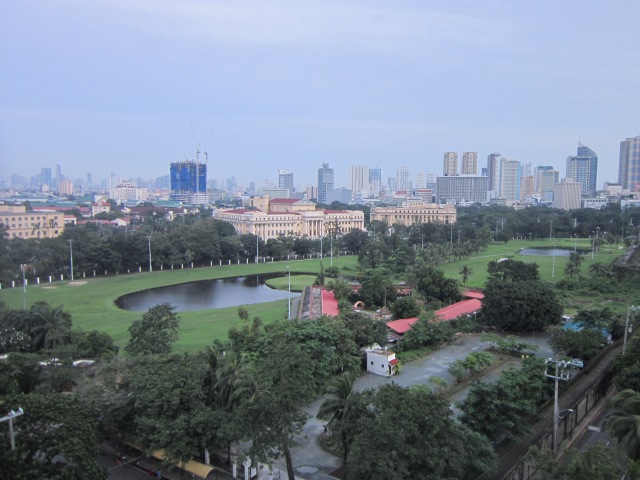
A view of the National Museum and the Intramuros Golf Course from the Bayleaf Hotel, a nice spot to watch the sunset in Manila Bay.
Continue visiting museums and galleries to nourish your mind, heart and even, spirit and fill it with things that are lasting, true, good and beautiful. Ditch the materialism of malls every now and then and troop to your local gallery and splurge on things that make you smarter, more cultured and more appreciative of things that are really free.
As a related article, read my experience as an Ayala Museum volunteer here: https://hechoayer.wordpress.com/2010/11/04/museum-musings-work-at-the-ayala-museum/

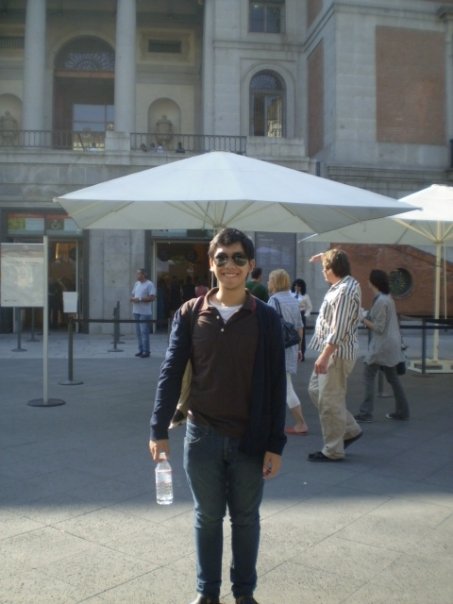
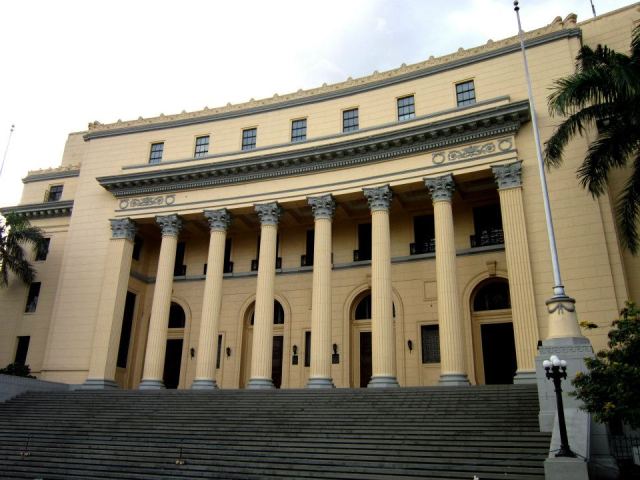
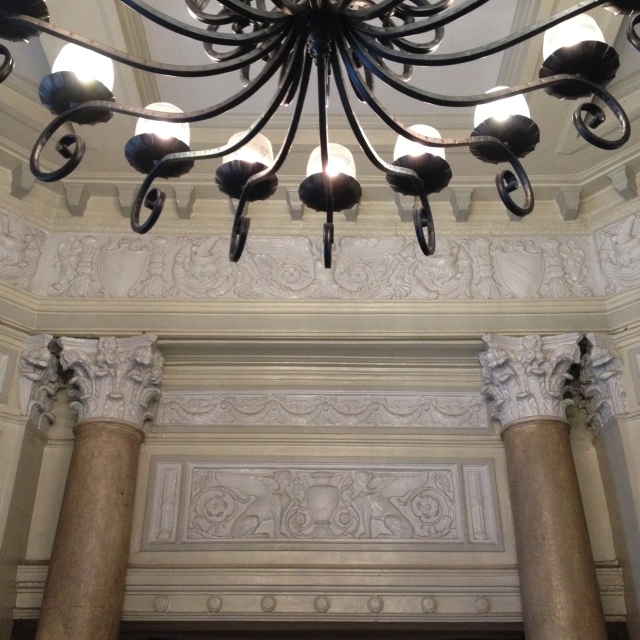
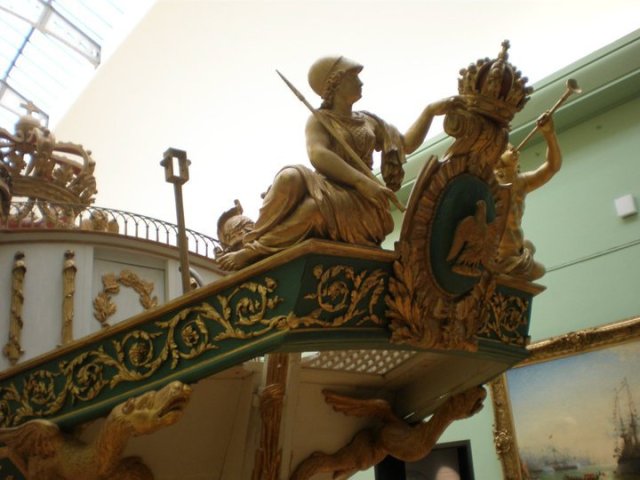
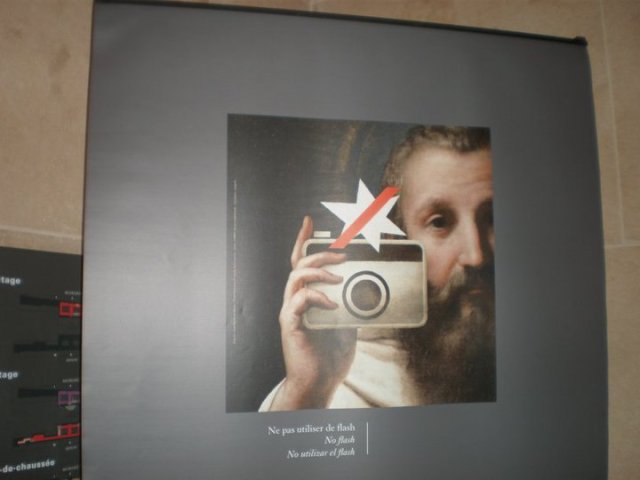
Although it is true that middle-class visitors can spare the 150 pesos as a kind of donation or “vote of money” for our museums, I’d like to think that the purpose of the free admissions is to promote the accessibility of these spaces for the masses. It is like state-subsidized education, where cultural experiences are made available to those who would not otherwise be able to afford it. (Isn’t visiting museum an educational act, after all?)
Though, unfortunately, there seems to be a mindset among Filipinos that visiting museums is such a leisurely, ‘burgis’ activity. The burden falls upon the government, as part of its educational mission, to destroy this attitude and instill in Filipino masses the sense that learning can and does take place beyond the classrooms, into museums and beyond.
I understand that this “free entrance” mechanism intends to achieve a noble purpose that is to lure persons to our museums. However, I do hope we Filipinos – opportunist middle-class or ignorant masses or whatever – transcend our aversion for “the old”/”luma” and appreciate museums for what they really are.